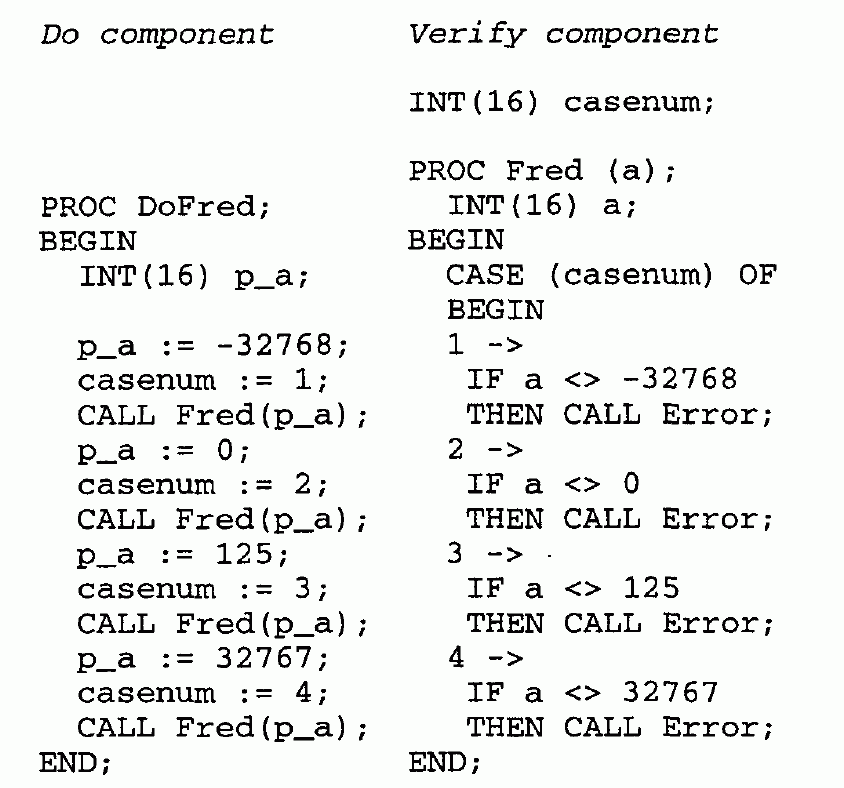pTAL(ID:8239/)
for portable TAL
Version of TAL that was (more) machine-independent, translated to C++
Related languages
| TAL | => | pTAL | Port of |
References:
Both our original language, pTAL, and the language of the
translation we produce, C++, use a combination of value
and pointer parameters. To check pointer parameters, the
Do component creates an instance of the domain type then
passes a pointer to it. The Verify component checks the
value, then fills in a new value that is in turn checked by the
Do component upon return. Languages that implement
value/result parameters would check values similarly.
If the profile has a result type, the Verify component returns
a procedure result value, which is checked by the Do
component.
The pTAL language contains a mechanism for optionally
passing parameters; the maximum number of parameters is
known and any parameter may be either present or absent.
This feature differs significantly from the C language
"va_list" model in which the maximum number of
parameters is not known. The AITG checks all
combinations of presence and absence for the first four
parameters* and selected combinations beyond that. A
similar strategy might check for various lengths of
parameter lists, assuming heuristics about how long the
parameter list might be.
Resources
- Example of pTAL being verified from Molloy et al 1997
